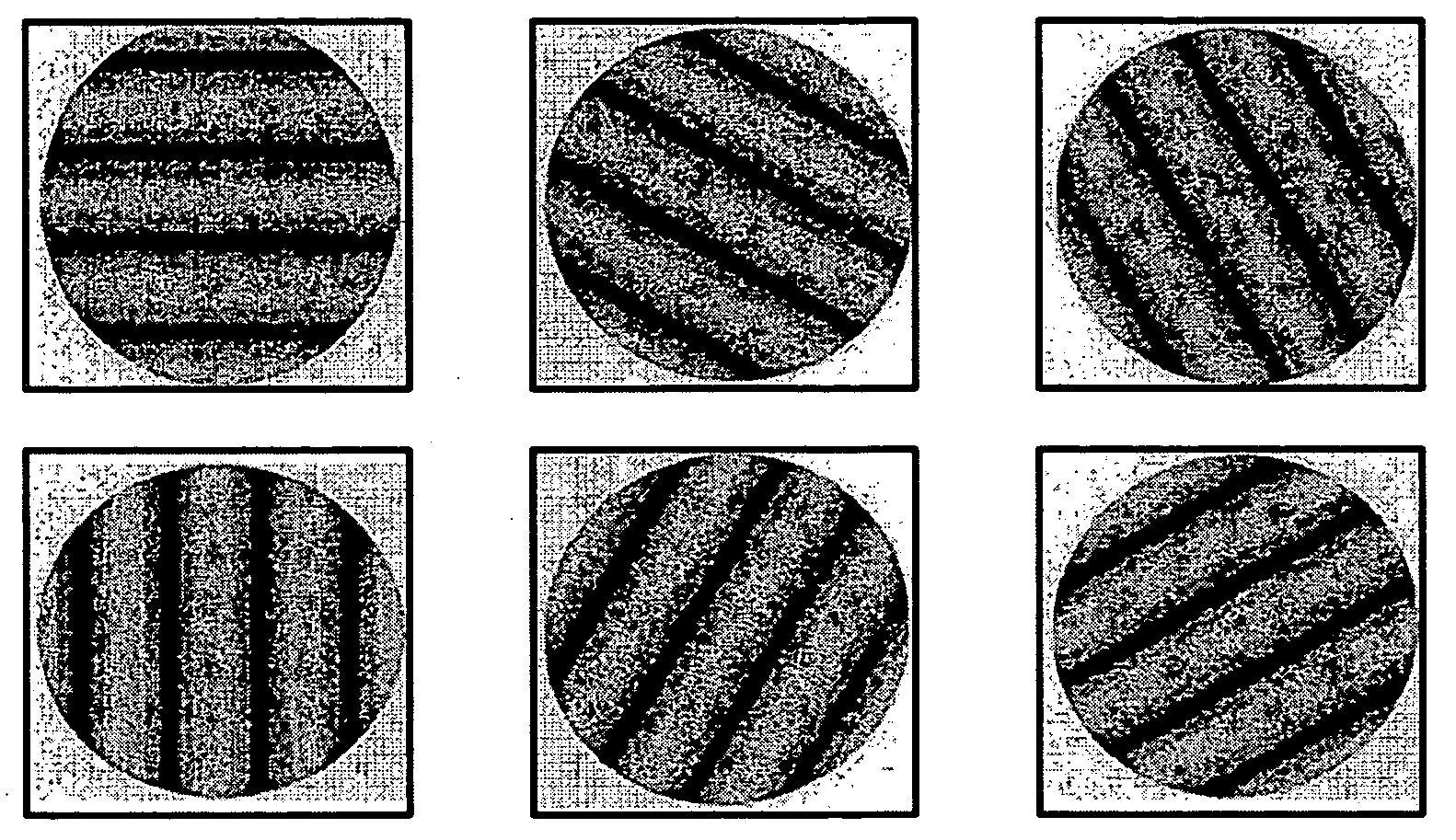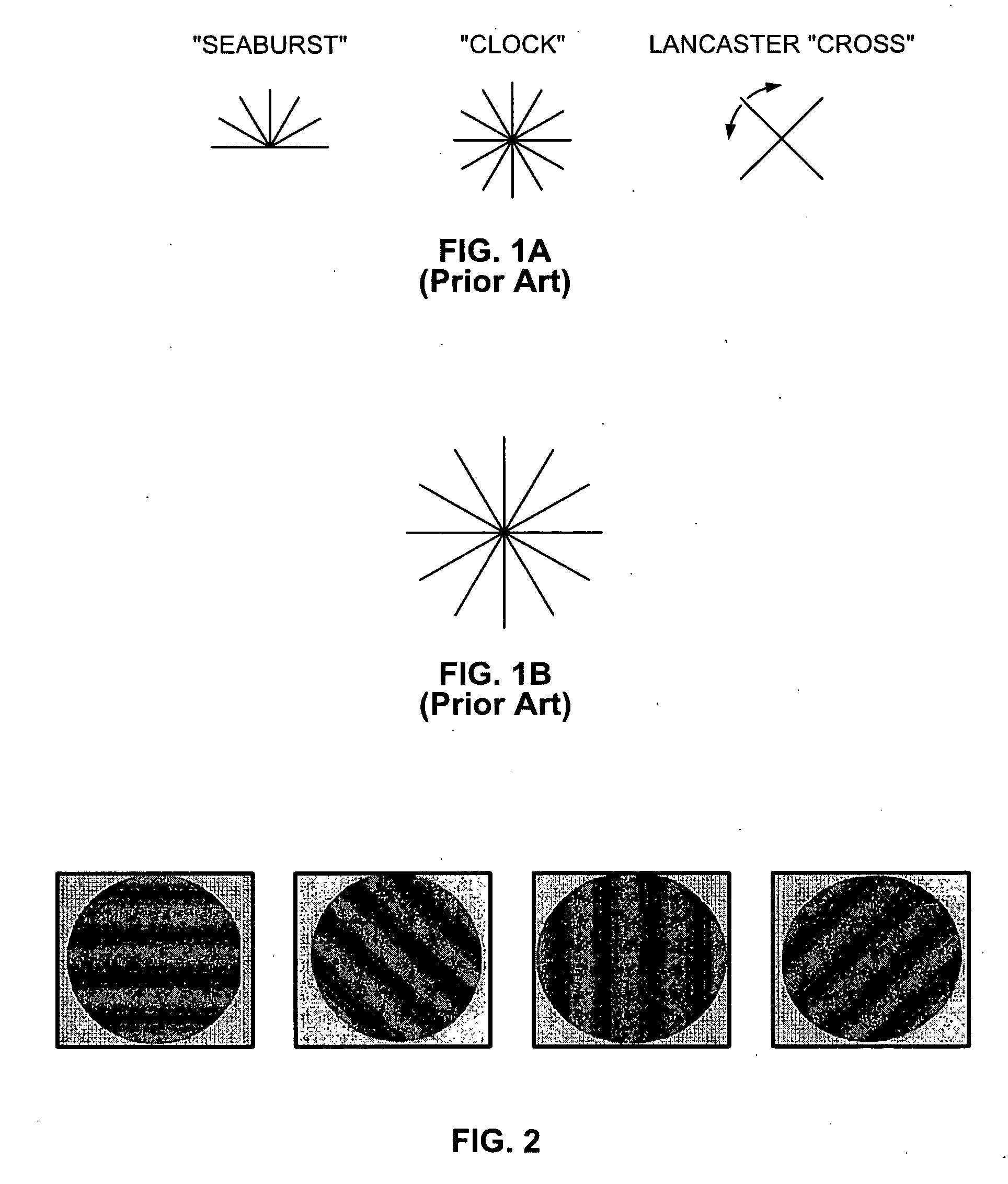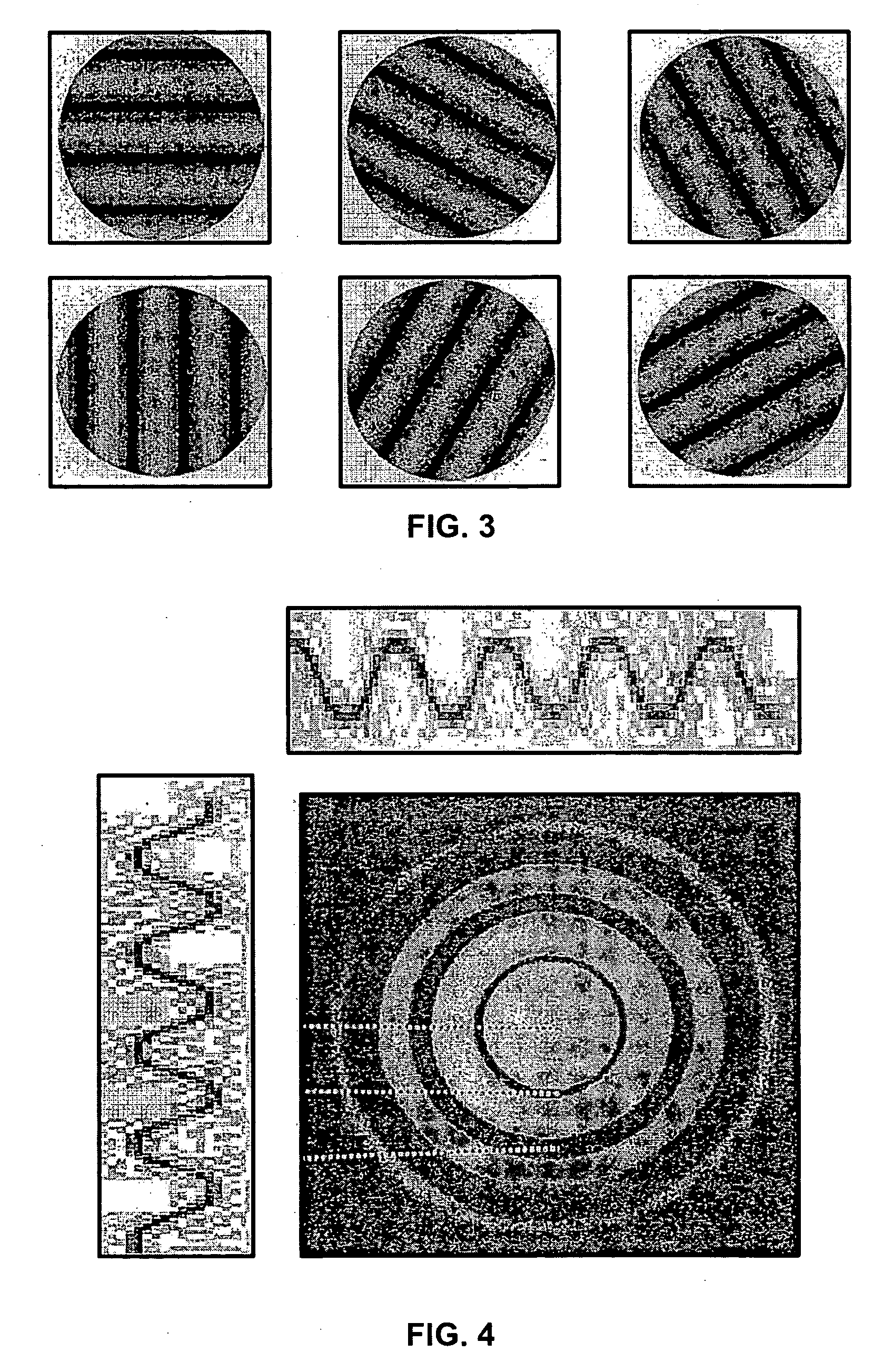Astigmatic axis independent spatial frequency and contrast sensitivity target and method
a independent technology, applied in the field of astigmatic axis independent spatial frequency and contrast sensitivity target and method, can solve the problem that test requires more presentation and therefore more tim
- Summary
- Abstract
- Description
- Claims
- Application Information
AI Technical Summary
Benefits of technology
Problems solved by technology
Method used
Image
Examples
first embodiment
[0026] Turning to FIG. 2, the present invention is a Four Choice Test (4 forced choices). Rather than all targets being oriented vertically or near vertical (±15°) the four targets are oriented 45° apart (horizontally, 45°, vertically and 135°).
[0027] While the targets of the Four Choice Test embodiment of the present invention, at multiple spatial frequencies and contrast levels, may be combined on a single wall chart, in the fashion illustrated in U.S. Pat. No. 5,500,699 to Ginsburg, for example, the preferred form of creation and display of the targets is one at a time by software on the screen of a computer monitor. More specifically, a patient sits and faces the monitor. As an example, for a monitor having an approximately 15″ to 60″ diagonal screen, with each target displayed on the monitor ranging from 1 minute of visual arc to 2° of visual arc and visual angle, the patient may sit approximately 5′ to 30′ from the screen and the ambient lighting in the room would be dark (les...
second embodiment
[0030] the present invention is a Six Choice Test (6 forced choices), as shown in FIG. 3. The Six Choice Test is performed in the same manner as described above for the Four Choice Test but doubles the number of choices from the three choice test. The targets are oriented at 9-3, 10-4, 11-5, 12-6, 1-7 and 2-8 clock hours with are in 30° increments. The additional choices further increase the specificity of the test and reduce the number of false positives. The patient is asked to identify the orientation of the target by the clock hour of orientation. As with the Four Choice Test, this may be accomplished in a variety of ways. For example, the patient may respond verbally or click one of six buttons, with each button labeled with one of the grating directions.
third embodiment
[0031] the present invention is a new Sinusoidal Bull's Eye (Rotationally Symmetric) Target, illustrated in FIG. 4, that eliminates the need for multiple presentations because there is no effect from the orientation of astigmatism or other non-rotational higher order aberrations. The Sinusoidal Bull's Eye Target of FIG. 4 is formed by a cross-section sinusoid that is pivoted around either the peak or valley of the sinusoid. In other words, the new target is a sinusoid rotated around a peak (center bright) or valley (center dark). Either polarity should be available. The center spot has ½ period and each (bright or dark) ring is ½ period. The fundamental spatial frequency can be for any spatial frequency. Normal human testing is usually between 0.5 and 60 cycles per degree.
PUM
 Login to View More
Login to View More Abstract
Description
Claims
Application Information
 Login to View More
Login to View More - R&D
- Intellectual Property
- Life Sciences
- Materials
- Tech Scout
- Unparalleled Data Quality
- Higher Quality Content
- 60% Fewer Hallucinations
Browse by: Latest US Patents, China's latest patents, Technical Efficacy Thesaurus, Application Domain, Technology Topic, Popular Technical Reports.
© 2025 PatSnap. All rights reserved.Legal|Privacy policy|Modern Slavery Act Transparency Statement|Sitemap|About US| Contact US: help@patsnap.com



